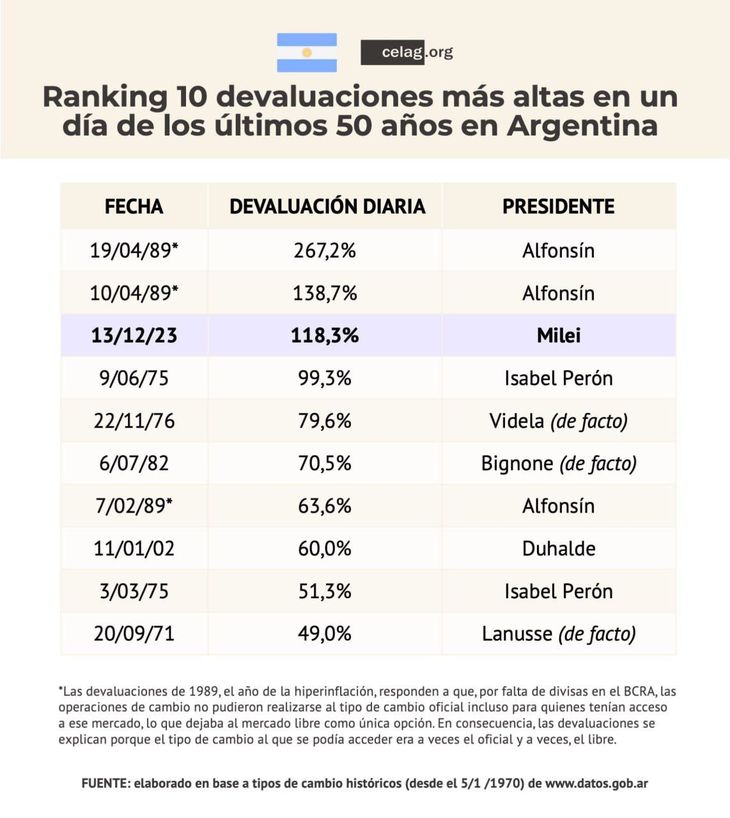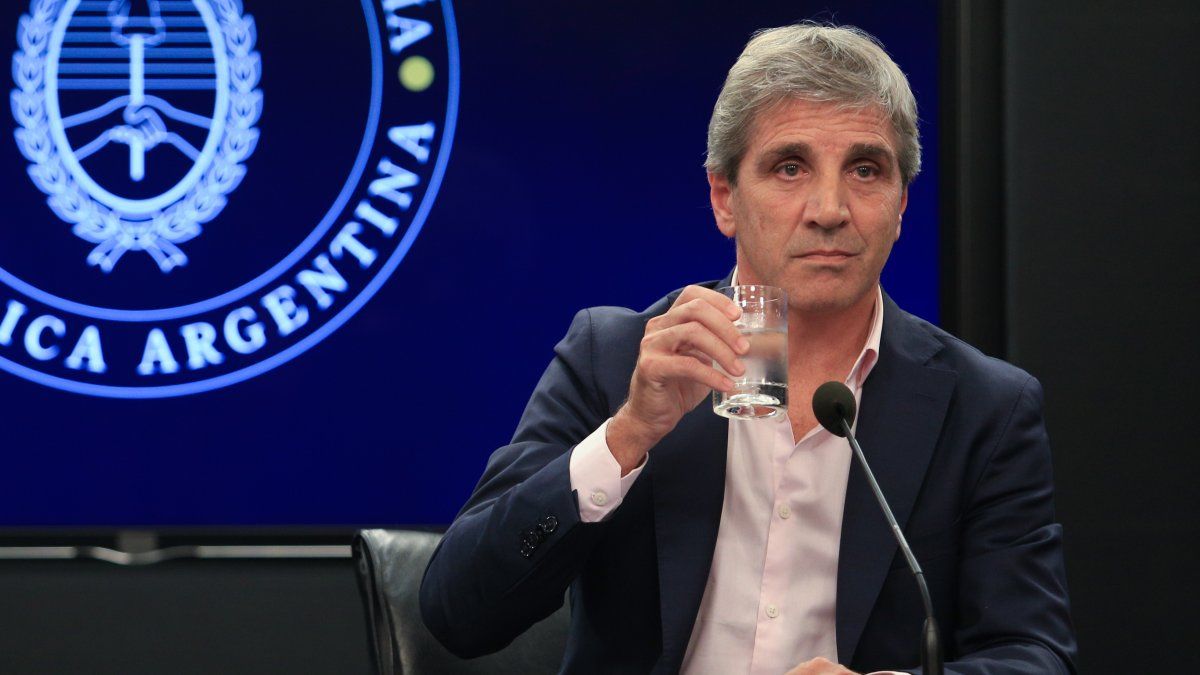The official’s definitions came through a response on the social network in March and reaching $1015 in April. Given the inflationary acceleration and the current devaluation rate of 2% monthly, by April Argentina would lose all the gain in competitiveness achieved in the December devaluation to $800.” “To enter the liquidation of agriculture with competitiveness, it must devalue. Otherwise, exports will fall, and it will cost dollars to enter,” Yosovitch concluded.
Given this, Luis Caputo He considered that the economist’s indicators “are quite far from reality” and that the conclusions he reached “are not shared by anyone today.” As for inflation, the Economy Minister expressed its percentage estimates for the first four months of the year, which would contemplate a decline in monthly price growth: 21.9% in January, 18% in February, 15% in March and 13% in April.
Luis Caputo Tweet Inflation.png
Devaluation of Javier Milei in December
On Wednesday, December 13, 2023, the government of Javier Milei performed the third largest daily rise of the dollar in Argentine history (118%)to the devalue the peso by 54% against the US currency. The only advances in the official exchange rate that are above the Minister of Economy Luis Caputo are those of the government of Raul Alfonsin in 1989 both, during hyperinflation.
The rise in the exchange rate that the government carried out on Wednesday December 13 when carrying the wholesale dollar from $366.45 to $800 adds to the peso devaluation of the outgoing president Alberto Fernandez he August 14, 2023which did not reach 20%.
Before there was the famous “stocks“and let’s talk about a dollar”blue“, in Argentina there was an official exchange rate and a free one. For this reason, the report of the CELAG clarifies that the increases in the exchange rate of 1989, during the hyperinflation“they respond that due to lack of dollars in the BCRA, exchange operations could not be carried out at the official exchange rate even for those who had access to this market, which left the free market as the only option.”
In this way, the daily rise of the dollar was above the last great Argentine devaluationwhich was made by the former president Eduardo Duhaldedays after taking office, the January 11, 2002but it only represented a foreign currency advance of 60%almost half.
Devaluation history.jpg

Government removes subsidies from transportation companies in the provinces and releases bus prices
Behind the fall of the “omnibus law” and in the middle of a fierce dispute with the governorsthe national government removed all the subsidies to the companies of public passenger transport of the provincesfreed the price of buses in the cities and eliminated the Interior Compensation Fund.
According to official sources, from now on the bus and group companies of national jurisdiction who operate in the provinces can set the price they want for travel rates. “They may charge the rate that they consider appropriate to the route they provide,” they noted.
Thus, subsidies to passengers in the provinces will be channeled through a unique and generalized discount of 55% for those who users of the SUBE card registered. The government’s decision Javier Milei is that the funds reach “directly to citizens” without provincial governments as intermediaries.
For this reason, it was also resolved that starting this year “The Interior Compensation Fund is eliminatedwhose sums were also received by companies providing services from the rest of the country.”
In the case of AMBA, The Government had already cut subsidies and instead set bimonthly increases according to the official inflation measured by INDEC. In fact, since Tuesday, February 6 The bus ticket went to $270 and the train to $130 for those who have the nominalized SUBE.
The provinces of Córdoba and Santa Fe are the most affected, since the cities of Córdoba, Rosario and Santa Fe They bring together the largest number of passengers, lines and units in their urban transportation systems.
Source: Ambito




